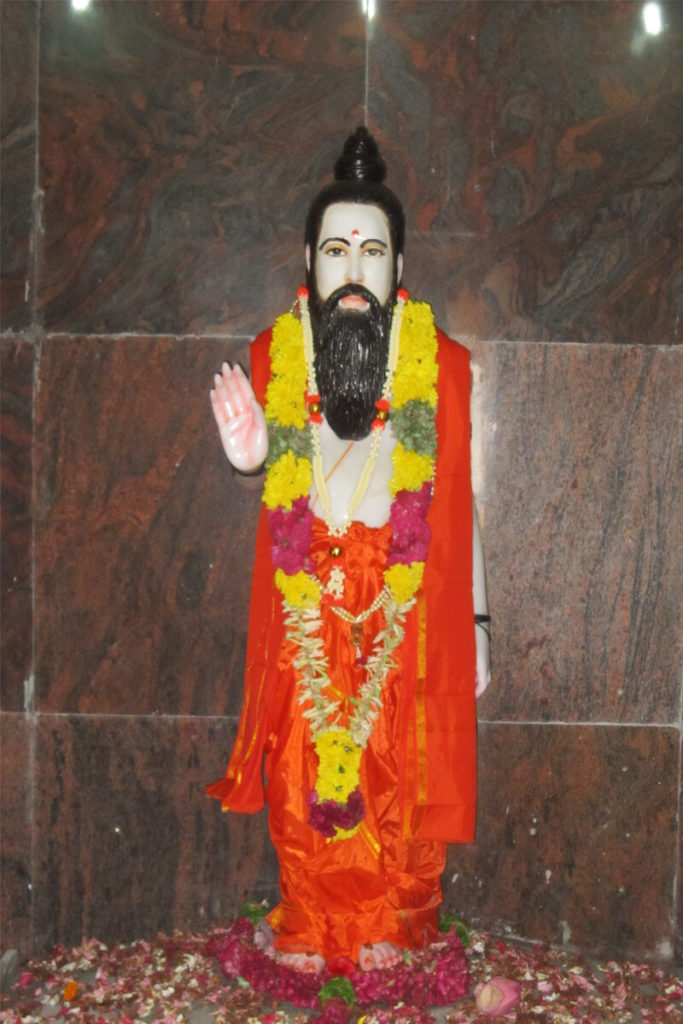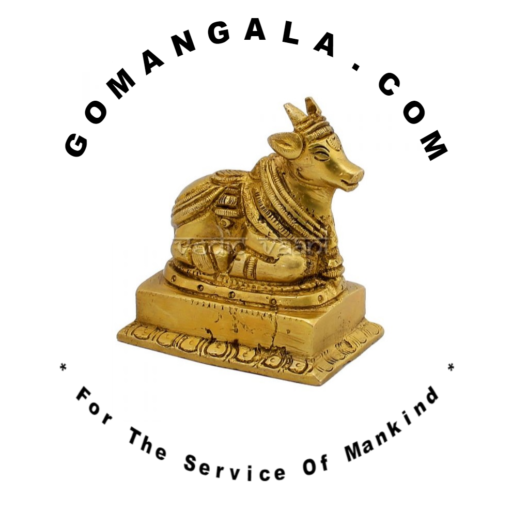Ramayana depicts the lives of many holy learned persons and they are called Maharshis, Rishis or Munis. India is referred as Bharata Khanda and the peninsular region is called as Indian sub-continent or Bharata Varsha. Various countries had their own independent rulers and in those times of Emperor Rama’s ruling era, the official language was Sanskrit and it was also a link language between countries. In north India, Valmiki Maharshi lived and used his own local language but he has written Ramayana in Sanskrit and taught it to his students. In Lanka also, Sanskrit was the official language but they used a different language while communicating locally. Agastya Muni lived near Tamraparni Mountain of Lanka and history says he used Tamil for local communication but was an expert in Sanskrit. Then, Lanka was considered as the geographic center of the earth for the purposes of calculation in astronomy. People had the knowledge of North Pole and referred earth as Bhoo Mandala, which means one can go circumscribing around the earth.

God Brahma had a child called Pulatsya and allotted Lanka for his living. Pulatsya had two children, Agastya and Vishrava. Vishrava had married many times and had many wives. The second wife belonged to demons lineage and her name is Kaikashi. Vishrava and Kaikashi couple were offered four children by God, and they are Ravana, Kumbhakarna, Shurpanakhi and Vibhishana. Agastya married only once and his wife is Lopamudra. Lopamudra is the daughter of king of Vidarbha and she was well educated. She was a devotee of Goddess Lalitha Devi. She had contributed many verses to Rigveda. They had a son and his name is Dhrdhasyu and his pet name is Idhmavaha. When Lopamudra was pregnant with this child, Agatsya was usually reciting veda’s verses in his house melodiously and loudly. Hence during the birth of Dhrdhasyu, instead of the first cry of the child, he was producing the Pranava sound ॐ ॐ ॐ ॐ ॐ.
Agastya also contributed to the verses of many Vedas. He mastered medicine and was one of the best physicians. Charaka was his disciple and has written many Ayurvedic books. Agastya has also written on Ayurveda called Agastya Samhita.
Ravana was ruling the country Lanka and he supported his countrymen to lead life of luxury as fit for demons which was disliked by Agastya Muni. Agastya was totally vegetarian and his house contained cows, calves and peacocks. He never used egg, wine or meat as a part of his food. His family members also lived a life liked by him. He believed that egg, wine or meat are parts of medicines and to be used only if prescribed by physicians for their prescribed period only.
Agastya was a worshipper of God and his rituals were complementary to the Vedic scriptures. He had performed penance and also attained a great power to control the nature around him. Also, he had travelled throughout the world as per the request of his patients in order to treat them and to save their lives. He had attended the palace of Ravana, his nephew as and when called from there. Ravana had a big family, where frequently the presence of a physician was required. Even though he worked for his parental uncle’s house, he disliked their living habits.
The medicine invented by Agastya by the combination of many herbal ingredients, called Agastya Rasayana is still popular and Ayurvedic doctors are prescribing it for the patients suffering from respiratory problems.
Once he had been sought assistance by the angels of God Brahma to assist them to kill the demons causing problems to other co living people, animals and other domestic cattle like cows. When the demons had gone hiding under the sea, the angels could not find these ugly demons. Agastya had managed to suck the entire water in the seas and oceans of the universe and exhaled the water vapor into the sky as clouds. Then the angels finished the killing of the disturbing demons. Agastya found many fish also died due to lack of water, in the sea. He remembered the words of his teacher, Hayagriva.
॥ परोपकारः पुण्याय पापाय पर पीडनम् ॥
The meaning is: By helping others, one gains virtues but to disturb others accumulates one’s sins accounts. He extracted the fish liver oils from the dead fish and preserved the collected fish liver oils safely, for future usage as medicine. There he found huge quantities of Navaratna gem stones on the bed of the dried seas and collected the best qualities of them, carefully packed and stored. He ordered the rain to refill the seas and oceans again up to the required level, immediately after completion of the angels’ tasks, for which God Brahma had thanked him a lot and blessed with boon of more powers to command the nature, if required. Also, he may be the first physician to utilize the fish liver oils as medicine known so far. He divided the collected gems into two parts and gave one part to his wife, Lopamudra and the other part to his nephew, Kubera.
Once, one young unmarried lady, daughter of a hunter living in the forest of Western Ghats, lost her father. Agastya Muni had looked after her as if his own daughter and hence she got the name as Agastyakanya. She decided to remain unmarried herself lifelong and to perform Rama Nama Japa (penance) and desired to have Darshan of Rama. Since she was the daughter of a hunter (Shabara means a hunter in Sanskrit), people called her as Shabari. Agastya Muni has arranged Sampati as her security around that forest till she gets to see Rama. Agastya Muni frequently used to visit her forest area for collecting lifesaving medical herbs. The wish of Shabari has been fulfilled later, and it is a separate story.
In another occasion, Ilvala and Vatapi, two demons planned to kill Agastya. Vatapi had disguised himself as a small germ and Ilvala had mixed him in the food and served Agastya that mixture during eating. Agastya had already alerted the ruling king and he got escorted with secret securities. He knew the illegal plans of the demons. He rubbed his stomach and forced to digest the Vatapi and he died inside his stomach. Then Agastya revealed Ilvala the death of Vatapi inside his stomach and Ilvala was afraid to hear the truth and fell up on his feet, seeking his pardon. Then the king’s securities exhibited themselves in front of him and seized the illegal properties from his house. Ilvala has become a good person thereafter.
Agastya desired to shift his residence to India from Lanka. Day by day, he had to face more and more disturbances under the ruling of Ravana and he lost confidence on him. He heard the abduction of Sita by Ravana and his wife suggested speeding up shifting their residence to India.
Rama blessed Shabari. Rama, with the help of Sugriva and his troops, built a bridge across the ocean to Lanka. The war had been started between Rama and Ravana. After the second day of the war, Rama had come to know that Ravana is a strong devotee of God Shiva and was depressed to think of killing him. On the third day morning, before sunrise, except Rama and Hanuman, all of the soldier men of Sugriva had proceeded to fight with the enemy troops of Ravana.
Hanuman asked Rama if any help is needed to start for the venture. Since Rama was depressed, he could not speak with him. Simultaneously, Agastya Muni had reached there intending to shift his residence to India. On the previous occasion, Hanuman had met him while entering for the first time into Lanka and hence could recognize him now. During the previous occasion, it was Agastya Muni who had shown the Palace of Ravana by lifting Hanuman with the help of three Darba grass. Hanuman introduced Agastya Muni to Rama and both of them discussed future plans. Since Agastya Muni was bored of Ravana, he supported his killing by Rama.
Rama wanted the confidence to proceed. Agastya was a great scholar. Hence Rama heard his advice attentively and asked him about the secrets of power that was possessed by Ravana. Agastya Muni told him Ravana has ten heads or say, ten throats which symbolizes he has by hearted all the existing ten branches of Vedas. The discussion between them is shown as follows:
Vishwamitra Rishi has taught the Gayatri Mantra to Rama which contains twenty four syllabled metre. The twenty four syllables symbolized the twenty four hours of one day when sunrise repeats on the following day. Thus it is called Surya Gayatri, which means, attributed to Sun. It is the mother of all ten branches of Vedas and the ten throated Ravana could be beheaded by Rama if he chants the praising mantras of sun, and the twenty four verses of the sun would overpower the ten branches of the entire Vedas that Ravana had mastered.
Then, Agastya Muni has sung the Aditya Hridaya Mantras in twenty four verses and Rama learnt them by heart by repeating them. The final twenty fourth verse was recited by Rama as follows:
वेदस्च क्रतुवस्चैव क्रतूनां फलमेव च । यानि कृत्याणि लोकेषु सर्वमेष रविः प्रभुः ॥
The meaning: Let the actions be performed with respect to the Vedas or as per the conveniences of the performer, or by virtue of the results of those rituals, the entire such items of actions are under the control of the Sun. It means the sun is the master of all.
Then, Rama discussed with Agastya Muni regarding the plans. Rama said revenge is not a good policy. But, Agastya Muni elaborated and made him to understand the need of punishing Ravana as he deserved it and deserved the capital punishment. Here sun is the friend for all and he is addressed as Mitra which means a friend. Ravana had grabbed the Pushpaka Vimana from his elder brother, Kubera along with the gems that Agastya Muni had offered him. He interrupted Jatayu while he was on duty and cut his wings. Ravana has expelled his own brother, Vibhishana, from his palace whereas he had not committed any mistakes. As a king, Ravana should not have punished the innocent. Hence, Ravana should be killed by Rama, which Agastya Muni judged.
Now Rama had become confident and he took his bow and arrows, after saluting Agastya Muni, proceeded to the battle field with Hanuman.
After defeating Ravana, Rama had explained the mistakes committed by him and offered a chance to live further, in case if he desired to seek pardon. Ravana remained adamant so Rama killed him.
Agastya Muni shifted his residence to a safe place where he could serve people as a physician and that place is on the south end of Western Ghats, called Agastya Kootam or Agastya Malai, which is on the border of Tamil Nadu and Kerala.
Agastya Muni is an expert Gemologist also and a strong devotee of Goddess Lalitha Devi. He has travelled throughout India; he propagated the ideals of his teacher Hayagriva. His period of life is long before Vyasa and his Lalitha Sahasranama or Lalitha Trishati is the proof available for his knowledge of Sanskrit literature. Shree Shankaracharya’s commentary is available on these works.
It is humbly prayed for the blessings of God Rama upon us.
Next post, being of Mountains and Places of Ramayana, may not be missed. Readers may provide feedback and share this story with friends and family.

0 Comments
1 Pingback